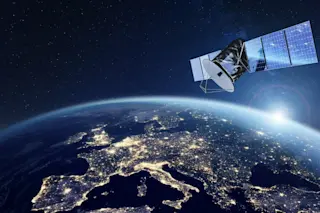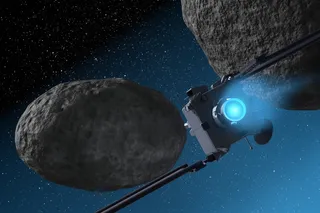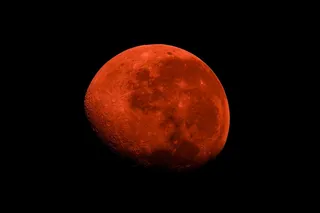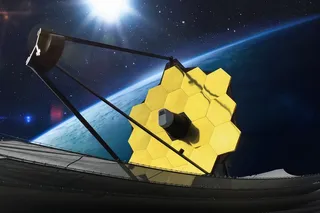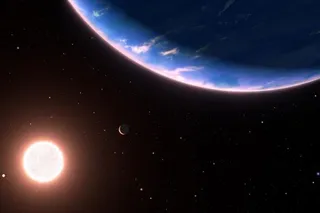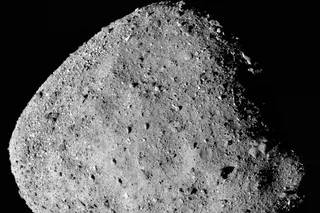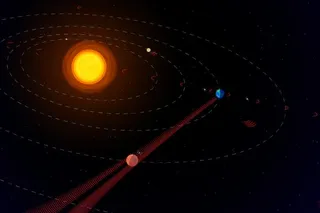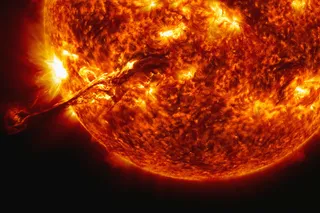Satellites have become a vital part of our daily lives, quietly orbiting Earth to enable technologies from weather forecasting to global communications. But while these modern marvels work tirelessly above us, they don’t last forever. Eventually, every satellite reaches the end of its life — and that often involves a fiery dive back through Earth’s atmosphere.
But how often do satellites fall back to Earth, and what happens when they do?
The Rise of the Satellite Era
The satellite era began with a historic beep on October 4, 1957, when the Soviet Union launched Sputnik 1, the world’s first artificial satellite. Since then, humanity has sent thousands of satellites into space.
As of 2024, there are roughly 10,000 active satellites (more than 6,600 of which are SpaceX Starlink satellites) circling our planet, with thousands more defunct ones up there, too. These satellites perform a wide array of functions, including communication, scientific research, weather monitoring, and military surveillance.
Read More: How Do SpaceX's Starlink Satellites Actually Work?
Understanding the Satellite Lifecycle
Every satellite's mission begins with a launch, where it is placed into a specific orbit around Earth. Depending on its design and purpose, a satellite might orbit the planet for years, even decades. However, like all things, satellites have a limited lifespan. They can become obsolete due to technological advances, exhaust their fuel supply, or suffer mechanical failures, ultimately turning them into space junk.
When a satellite reaches the end of its operational life, several outcomes are possible. Some satellites are purposely moved to higher "graveyard" orbits, where they’ll stay out of the way of operational spacecraft. Others are deliberately deorbited so that they harmlessly burn up upon reentry into Earth's atmosphere. However, not all satellites meet such controlled fates.
Read More: Space Launches Are on the Rise and So Is a New Kind of Air Pollution
What Happens When Satellites Fall
The idea of satellites crashing back to Earth might make you think of fiery impacts. But in reality, the process is usually far less dramatic.
As a satellite reenters Earth's atmosphere, the immense heat and friction it experiences does cause it to burn up and break apart, but this typically concludes long before it reaches the ground. Only the most durable spacecraft components, such as fuel tanks or engines, tend to survive atmospheric reentry and the fall back to Earth.
According to the ESA’s 2023 Space Environmental Report, approximately 160 large objects, such as satellites, made uncontrolled reentries in 2021. While these events are not widely publicized, space agencies carefully monitor them to ensure they pose minimal threat to human life and property.
Following reentry, most surviving satellite debris (if there is any) lands in remote or uninhabited areas, often in the oceans, minimizing the risk of damage. However, according to an FAA report to Congress on the risk associated with reentry disposal of satellites from proposed large constellations in low Earth orbit:
“By 2035, if the expected large constellation growth is realized and debris from Starlink satellites survive reentry, the total number of hazardous fragments surviving reentries each year is expected to reach 28,000, and the casualty expectation, the number of individuals on the ground predicted to be injured or killed by debris surviving the reentries of satellites being disposed from these constellations, would be 0.6 per year, which means that one person on the planet would be expected to be injured or killed every two years.”
Read More: We Now Have Satellite Traffic Jams In Space
High-Profile Satellite Reentries
While most satellite reentries go unnoticed, a few have captured global attention. One of the most notable examples occurred on July 11, 1979, when NASA’s Skylab space station made an uncontrolled reentry after six years in orbit. Although most of the nearly 80-ton structure burned up, debris was ultimately scattered over parts of the Indian Ocean and Australia, creating a media spectacle.
On March 23, 2001, Russia's Mir space station also made headlines when it was deliberately deorbited after 15 years in space. The controlled descent ensured that Mir broke apart over a remote part of the Pacific Ocean, avoiding any populated areas.
More recently, on Nov. 4, 2022, a roughly 22-ton Chinese Long March 5B rocket booster made an uncontrolled reentry over the south-central Pacific Ocean, temporarily closing airspace and sparking concern. Fortunately, surviving debris did not cause any harm. However, these incidents highlight the need for international collaboration and improved tracking systems to mitigate the risks associated with reentries.
Read More: How NASA And SpaceX Get Spacecraft Safely Back On Earth
The Risks and How We Manage Them
While most satellite reentries are completely harmless, as the FAA report shows, there is a ridiculously small but growing chance that falling space debris could cause bodily injury. To date, no confirmed deaths have been attributed to falling space debris. However, as the number of satellites in orbit increases, so does the potential for accidents.
To reduce these risks, space agencies and private companies are investing in new technologies and strategies for managing orbital debris and the end-of-life phase of satellites. Innovations such as drag sails could help satellites deorbit more predictably, ensuring they burn up in the atmosphere. Advanced tracking systems are also being developed to more accurately monitor and predict reentries.
Read More: Shooting Stars Could Just Be Space Debris Moving at 100,000 Miles Per Hour
Shepherding Space for the Next Generation
Satellites have revolutionized our world, making possible modern life as we know it. Yet, like all technology, the proliferation of satellites comes with major challenges that must be carefully managed. As more and more satellites continue to enter service, precisely planning and controlling how they are deorbited becomes increasingly important.
In the end, satellite reentry is not just a technical issue. It's a testament to our growing responsibility in space — one that we must handle with care if we wish to continue exploring the final frontier.
Read More: 15 of the Most Life-Changing Spacecraft and Missions That Fueled Our Curiosity
Article Sources
Our writers at Discovermagazine.com use peer-reviewed studies and high-quality sources for our articles, and our editors review for scientific accuracy and editorial standards. Review the sources used below for this article:
NASA. Sputnik 1
Space Watch Global. Look Up Space Reports More Than 10,000 Active Satellites in Orbit
Aerospace. Majority of Satellites Exceed Design Life
NASA. What Happens to Old Satellites? We Asked a NASA Technologist: Episode 30
NASA. Debris Reentry
Journal of Space Safety Engineering. Demisability of critical spacecraft components during atmospheric re-entry
The European Space Agency. ESA’s Space Environment Report 2023
U.S. Department of Transportation. Report to Congress Reentry Disposal of Satellites
NASA. Mir Deorbit Animation
Space News. Long March 5B rocket reenters over Pacific Ocean after forcing airspace closures in Europe
The Conversation. Scientists calculate the risk of someone being killed by space junk
NASA. NASA’s Efforts to Mitigate the Risks Posed by Orbital Debris
Astronomy. How drag sails could help solve our space junk problem
NASA Orbital Debris Program Office. Radar Measurements


